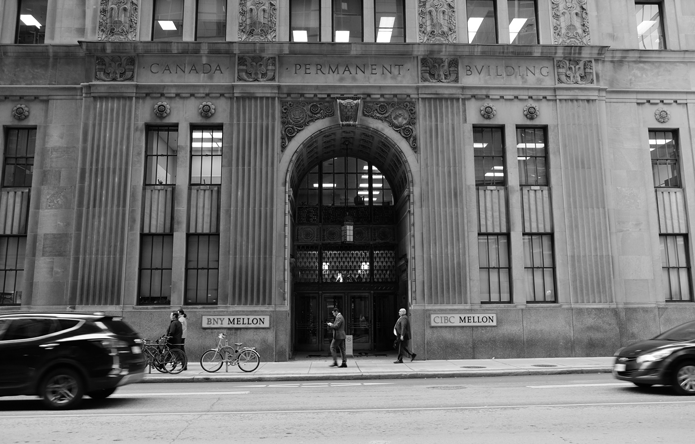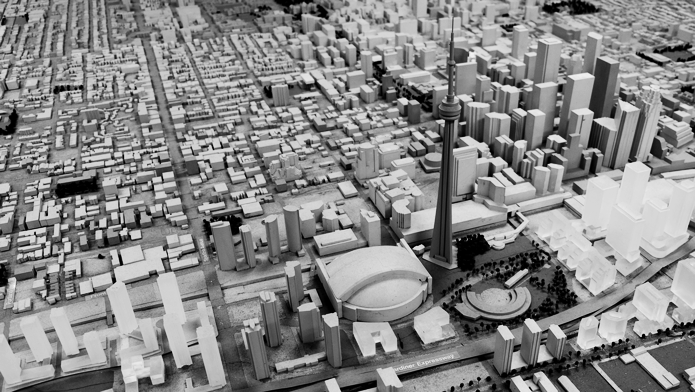May 9, 2017
Cities should represent progress. More than half of the global population now lives in cities and, according to the World Health Organization, this number continues to climb by 60 million people a year. The urbanization of our world should be a sign of our evolution as a species. But is it?

These cities are resilient during economic downturns; their walkable and transit-supported communities are built at densities that facilitate local economic development, entrepreneurialism and meaningful work. People in these cities value access to education and cultural institutions as much as they value access to clean land, air and water. These cities are places where it is possible to arrive as a newcomer and comfortably transition into the middle class in just one generation. This is because all of the amenities and services needed to do so – like libraries, access to recreation and affordable housing – are readily available. These cities are not only a point of pride for their nations, they also drive foreign investment, gross domestic product and, therefore, shared prosperity.
In Canada, we are blessed with some of the most liveable cities in the world. But as they have grown and prospered, cracks have also begun to form. Even the City of Toronto – praised by the Economic Intelligence Unit as one of the most reputable and liveable cities in the world – is rapidly becoming a place of growing disparity between the super-rich and the poor. On the face of it, the local, regional and national narrative pits ‘urban elites’ against the have-nots. This narrative has easily taken root because the presence of wealth – luxury homes, five-star hotels, exclusive hockey tickets that cost the equivalent of a week’s wages – are visible and easy to see. They mask the growing inequality hidden in every neighbourhood of the city – including the condo-filled core. Toronto, for example, has the dubious distinction of being the child poverty capital of Canada. One in four children in this rich city lives below the poverty line.
If we want our Canadian cities to effectively address the pressing issues of our time – issues that they are on the front lines of – a new relationship between large cities and provinces is required to empower cities to act as they see fit and to appropriately fund long-term infrastructure needs.
As there is a shift – in Canada and elsewhere – from a largely rural and agricultural society to one in which cities are our central form of self-organization, the hope is (or at least has been) to leave poverty behind. Ideally, the places we live, work and play will become beacons of innovation, prosperity, sustainability and civility.
And yet, in the Canadian context, the governance of our largest cities does not reflect their scale, their challenges or the role that they increasingly play on the world stage – as actors in economic development and trade, as leaders in mitigating climate change through progressive and grassroots policy frameworks or as receptacles for waves of humanity displaced by war. Within Canada, it is in our cities that we hold the potential to best demonstrate our capacity to welcome, respect and integrate newcomers; where our ability to attract talent as the basis of a knowledge and innovation economy become real; and where our continued commitment to designing for long-term health and the Paris Agreement will materialize in the design of our streets, sewer systems and neighbourhoods. And it is our cities that have been, historically, best positioned to advance social justice. But are they still?
Here’s the rub: whereas the City of Toronto is the sixth-largest government in Canada, responsible for the well-being of some 2.8 million inhabitants, it lacks the constitutional powers and rights of self-government afforded to many smaller governments a fraction of its scale – and by that I mean most provinces – across the country. In Canada, large-scale cities remain, to this day, “creatures” of their province. This lack of autonomy hamstrings governance in a global age defined by cities. And while this is about governance, it is also about something else that is far weightier: money.

Recently, the City of Toronto took the big step of bringing forward a motion to introduce road tolling on several city highways that serve as major interregional transportation corridors: something that, ostensibly, is allowed under the City of Toronto Act. The aging, elevated Gardiner Expressway requires a realignment of the eastern section and is due for a $3.6-billion rehabilitation. The Don Valley Parkway is used by 110,000 drivers daily, north of the Bayview Avenue and Bloor Street interchange. The tolling proposal aimed to shift the costs of repair and maintenance off the property tax base and on to the users (drivers), while reducing gridlock and generating cash for transit projects that have been promised for decades.

While tolling is allowed in the City of Toronto Act, it still requires approval from the Province of Ontario. Shortly after agreeing to support road tolling for the City of Toronto, the Premier took the traffic management tool off the table over concern about how they would play in a pending provincial election, denying Toronto the opportunity to borrow against this revenue stream as a means to funding its ambitious transit network plan.
It is broadly estimated that Torontonians pay over $4.7 billion annually more in taxes than they receive back in the form of provincial and federal programs and services. And yet the city struggles to provide sufficient affordable housing or to build the transportation infrastructure it needs to serve its growing population. Just half of that amount annually would allow Toronto to eliminate its 10-year, $1.73 billion social housing capital budget deficit and invest as much as $2 billion annually in transit and transportation projects. It would allow the city to strategically plan for and sufficiently address both its affordability crisis and its long-term transit planning needs. There are other ways that the city cannot act in its own best interests either – including, for example, the implementation of Inclusionary Zoning policies to aid in the affordable housing crunch – without the permission of the province. We are like the pesky teenager constantly asking permission to stay out later than 10 o’clock.
This is not how cities emulate progress. If we want our Canadian cities to effectively address the pressing issues of our time – issues that they are on the front lines of – a new relationship between large cities and provinces is required to empower cities to act as they see fit and to appropriately fund long-term infrastructure needs. The old model is a 19th century one. It sees cities as service delivery agents, providing access to roads, sewers, parks and schools. The new model should be designed for our cities to succeed in the 21st century. It should recognize and support the role of Canadian cities as agents of economic competitiveness, livability, environmental sustainability and social justice. Our future prosperity depends on it.

As Canada marks its 150th birthday this year, Canadians have a historic opportunity not only to celebrate a century and a half of accomplishments, but also to look forward to what we can achieve in the future. The Mowat Centre is releasing a series of short written pieces and video interviews in the weeks leading up to July 1st that will look ahead and present a variety of bold, potentially transformative policy ideas.
More Bold IdeasAuthor
Jennifer Keesmat








